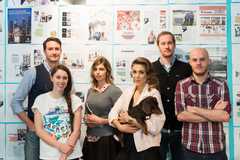Local media brands / Global
Print run
Times don’t have to be tough for the print industry: these three local media outlets prove that success is attainable when you have a strong, high-quality brand.
01
CityMag
Adelaide
It’s Monday morning and over a cluttered breakfast table an assembly of Adelaide’s city decision makers are engaging in animated discussion about page spreads and picture captions. It’s an unlikely editorial meeting but these gatherings are becoming a regular fixture at the downtown Blefari café. Today, printer’s proofs from CityMag’s fifth issue are being pored over by government officials, property developers and senior representatives from a major bank, university and city mall. They’ve all cleared their diaries to lend their influence to an independent magazine aiming to revitalise the image of their city.
“What CityMag does is provide a fresh perspective and new way of looking at the city: its economy, business and the way people interact with it,” says Vicki Evans, director of Adelaide’s Capital City Committee Directorate. “It poses challenging questions in its stories but it also unashamedly projects the idea that we are a forward-thinking city that wants to take its ideas to the world.”
CityMag, the free, chunky quarterly at the heart of this morning’s discussion, is taking its most ambitious editorial outing thus far. Among its thoughtfully designed pages is a politically charged editor’s letter hoping to spark debate on the nation’s attitude to refugees, a photographic piece on the exotic offerings of a new local Afghani deli and a fashion editorial putting clothes from local designers alongside some of the city’s prettiest pooches. It’s not just the editorial mix that’s raising eyebrows: CityMag’s brightly illustrated full-page custom advertisements are getting an equal amount of attention.
At the centre of this conversation is publisher and entrepreneur Joshua Fanning who, alongside editor Farrin Foster, meets this advisory panel every few months to discuss what’s on the up in Australia’s fifth-largest city.
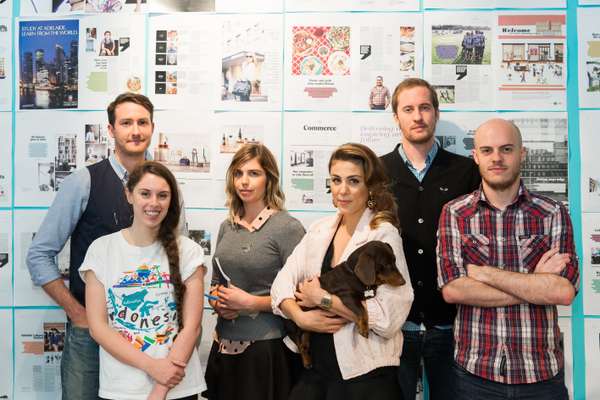
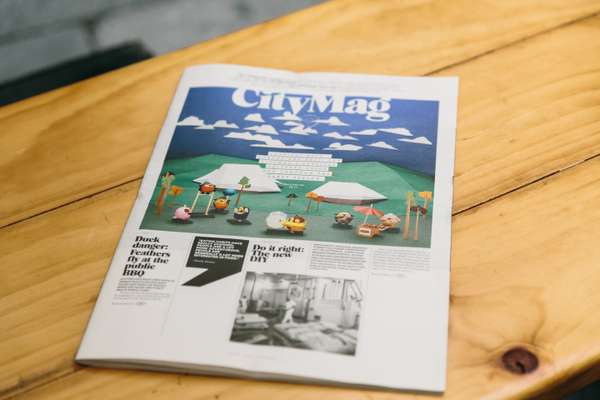
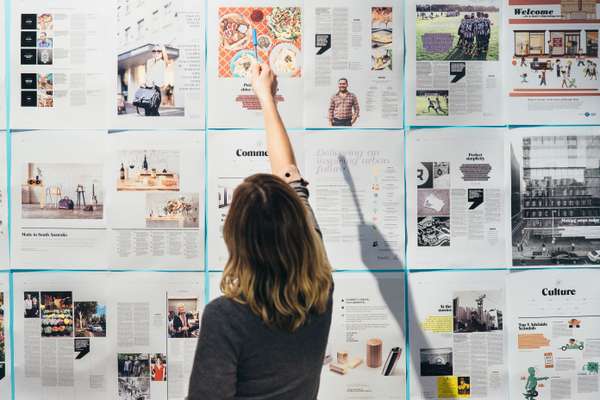
“CityMag is my Manhattan,” says Fanning. (He is referring to the movie, not the borough.) “New York might be the world’s most celebrated city but it was the way Woody Allen authored his story, which resonated both locally and universally, that really made it special.
“When I set out to create CityMag, that was my pitch to the top end of town: that we should work together to tell a magnetic story that attracts people to this forward-thinking city."
Fanning is a young man of ambition and his fight to bring together this crucial group of investors and influencers has been a long slog. His first publishing venture, free youth magazine Merge, ran locally for 36 months but failed to attract long-term support. He then co-published the much-loved but financially unsustainable Collect, an international journal about local lifestyle. With CityMag, launched just over a year ago, he seems to have hit the right balance of editorial class, great design (from previous Collect collaborator Adam Johnson) and business sensibility.
Fanning also draws on his team to create custom adverts so that brand messages get maximum attention between CityMag’s pages. In taking this approach he has attracted support from South Australia’s leading financial institution BankSA and a number of other key sponsors. Adelaide might be a small pond but CityMag is proving to be prime bait for the big fish.
“Essentially the magazine was born out of frustration that the different government departments and ngos were all talking about this ‘vibrant new Adelaide’ but coming at it from cross purposes and approaching it with very partisan lines,” says Fanning. “So I stepped in and said that I thought the message and the positivity was great but they needed to be talking to people, rather than talking at them.”
To reach these readers, 20,000 magazines are distributed across a variety of retailers and cultural precincts throughout Adelaide’s central business district.
Publishing only four issues a year, CityMag relies on its interesting editorial content and eye-catching aesthetics to ensure it remains on the coffee tables of its readers. But in a small city that is clearly excited about what CityMag calls its “local legends”, the magazine is finding fans in every nook, all the way to the town hall.
“It is broadening people’s horizons and engaging people in a different way,” says Adelaide lord mayor Stephen Yarwood. “CityMag is doing what you can’t really do online: it’s creating a character and style that is unique and says something about what we are.”
One of Adelaide’s major challenges is that the city and media outlets have been run by older people, according to Yarwood. “The communication message has been controlled by our baby boomers,” he says. “The mere fact that we have this start-up industry and that the next generation of leaders is communicating its values, ideas and opportunities and driving a whole new entrepreneurial ecosystem of small businesses is really important.”
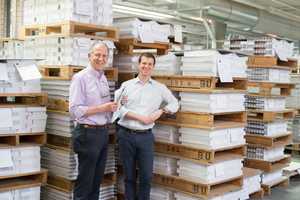
02
Bubu
Mönchaltorf, Switzerland
Just outside Zürich is Bubu, the bookbinding company that for three generations has been a leader in high-quality traditional craft. It is now pressing ahead with innovative business models such as an online create-your-own shop. The company’s CEO, Christian Burkhardt, oversees 149 employees at its Mönchaltorf headquarters.
How has Bubu benefited from being a family firm?
My grandfather founded the company in 1941. He believed in quality and interesting new books; my father very much continued and lifted this spirit when he took over in the early 1970s. This dedication has led to us being known as ‘the book architects’.
How healthy is the Swiss bookbinding industry?
About 20 or 30 years ago there were around 30 comparable bookbinders here. Now there are only three left and we are proud of being one of them. Labour costs in Switzerland are much higher than in neighbouring countries. We are only able to survive by doing perfect-quality work in a short time.
How are your processes changing?
There are two ways to bind books: the industrial way, which is based in analogue technology, and the digital way, which has revolutionised the industry. We do both. With Bookfactory, our online platform, the public can order small runs, whereas industrial orders could be anything up to 100,000. Production for those orders involves folding, cutting, stitch sewing and then putting the block and cover together.
But the craft element is still being maintained?
We have artists who request extra-large books that we can only do by hand. We still have a big atelier of around 15 bookbinders who know the traditional way of binding books.
How can a good working environment encourage good business?
In 1984 my father commissioned an architect to construct our office building who at that time was not so famous: Theo Hotz. He has since become much celebrated and the building is something of a landmark, so it’s very nice to work in and many employees have been here since then. We have a good relationship with the local community and people know we are a stable employer in a non-stable environment.
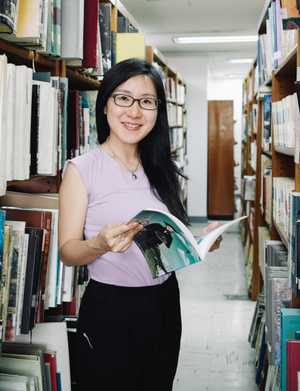
03
The Hankyoreh
Seoul
A newspaper is more than just a daily when it becomes the voice of a generation. Independent, risk-taking journalism is perhaps the greatest accomplishment that a media outlet can strive towards; no other South Korean publication is embedded with those ethics nor carries the same brand value as The Hankyoreh.
The media company’s nine-storey office building, located in Seoul’s riverside Mapo district, is a hub of activity with a stream of reporters going out on assignment. By nightfall, the ground floor’s production centre will be alive with that unmistakable hum of industrial printers and the smell of freshly inked paper will fill the room.
The Hankyoreh was baptised with the tear gas lobbed against pro-democracy demonstrators of the 1980s. Some of the reporters who founded the paper had left their jobs at government-aligned newspaper companies because they no longer wanted to toe the official line. That same spirit of freedom of speech and activism continues to underlie reporting here, which for 26 years has exposed corruption at all levels of society and provides a progressive alternative to the conservative discourse that still dominates the nation’s politics.
The Hankyoreh’s ownership structure sets it apart, too. Bronze tablets etched with the names of more than 60,000 private shareholders who provided the initial funding for the newspaper adorn the company’s lobby. It’s a number that’s still growing. But the paper’s outspokenness hasn’t won it many friends among those who wield power in Seoul and many groups and companies have pulled their advertising.
How to keep people interested in picking up a newspaper in a city and country where almost everyone has a smartphone is the top challenge for The Hankyoreh. That’s according to chief of staff Ha Soojeong, who says the company is reaching out to younger generations with apps, podcasts and an online video service called Hankyoreh TV. “We have to think about broadening our spectrum of readers,” she says. The company hopes to finally monetise their digital content with the Hankyoreh Digest, which launched this spring.

